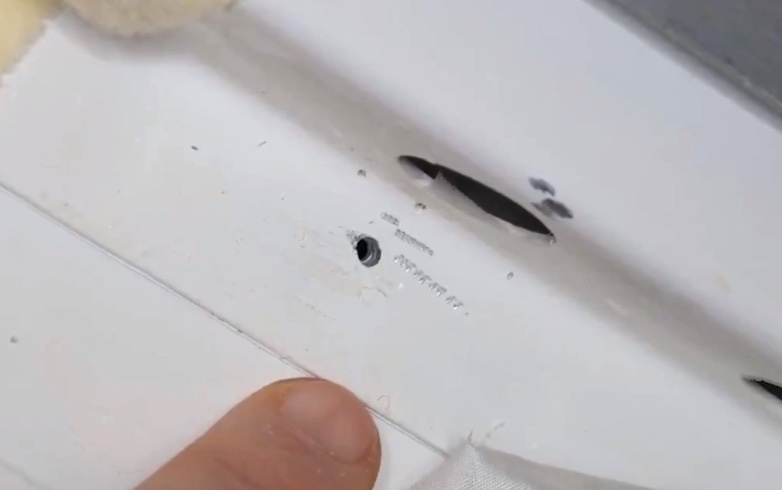
A thorough Russian investigation of a leak that occurred in August in the orbital module of a Russian Soyuz spacecraft, which is attached to the International Space Station, will not be completed until November. But this week, the head of the Russian space agency Roscosmos reignited controversy about the leak with some comments during a television appearance.
A preliminary investigation, according to Russia's chief spaceflight official, Deputy Prime Minister Dmitry Rogozin, "concluded that a manufacturing defect had been ruled out which is important to establish the truth." So if it wasn't a manufacturing defect, then what was it? As Rogozin did not say, this re-fueled speculation in some media reports that the hole was intentionally drilled by NASA astronauts in space. This theory is nonsensical, but it appears to play well to Russian audiences.
After these latest comments and with an imminent Soyuz spacecraft launch on October 11 that will carry NASA astronaut Nick Hague to the International Space Station, the US space agency felt the need to put out a new statement on Wednesday. It reads:
On Aug. 29, 2018 a small hole was discovered on the International Space Station. This resulted in a pressure leak. The hole has been identified and fixed by space station crew.
Russian media recently reported that General Director Rogozin said the hole was not a manufacturing defect. Ruling out a manufacturing defect indicates that this is an isolated issue which does not categorically affect future production.
This conclusion does not necessarily mean the hole was created intentionally or with mal-intent. NASA and Roscosmos are both investigating the incident to determine the cause. The International Space Station Program is tentatively planning a spacewalk in November to gather more information.
On October 11, American Astronaut Nick Hague and Russian Cosmonaut Alexey Ovchinin will launch to the International Space Station on a Russian Soyuz MS-10 spacecraft from the Baikonur Cosmodrome in Kazakhstan. Administrator Bridenstine is scheduled to attend the launch and plans to meet with Mr. Rogozin. This will be their first in-person meeting. They had a telephone call on September 12 during which they discussed the International Space Station leak.
Some of the language in this statement can be a bit difficult to parse, but, after speaking with a NASA official, here's how we were told to interpret this.
First of all, NASA wanted to send a message that it has confidence in the Soyuz spacecraft—the only means by which NASA and Russian astronauts can presently fly to and from the space station—prior to next week's launch. Hence the language that the August leak "does not categorically affect future production."
Second, the space agency wanted to affirm its view that this was likely not an intentional bit of sabotage—and definitely was not an act of NASA astronauts in space.
So what really happened? The prevailing theory at NASA is that the Soyuz spacecraft, which arrived at the station in June, was accidentally damaged at some point during the manufacturing or integration process. This could have happened during the manufacturing phase at RSC Energia's facilities in Samara, Russia, or at the processing and integration facilities in Baikonur, Kazakhstan, from where the spacecraft was launched.
After this apparent drilling accident, a technician may have seen a drilling mistake and covered the hole with glue, which prevented the problem from being detected during a vacuum test. This temporary patch failed a couple of months later after prolonged exposure in space. This, by the definition of the Russians, would apparently not be considered a "manufacturing defect," like the use of improper metals or other processes to make the vehicles.
The bottom line is that this relatively small leak has grown into a significant rift between the Russian and US space programs. Overall, they have a good relationship, and the two must work together to keep the space station in orbit. But having Rogozin running around and speaking in advance of the final report probably causes more problems than it solves. This is likely the real message implicit in Wednesday's statement from NASA.
https://arstechnica.com/science/2018/10/nasa-issues-statement-on-iss-leak-investigation-cites-no-mal-intent/Bagikan Berita Ini
















0 Response to "After more speculation about cause of ISS leak, NASA issues another statement"
Post a Comment